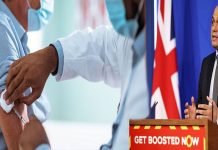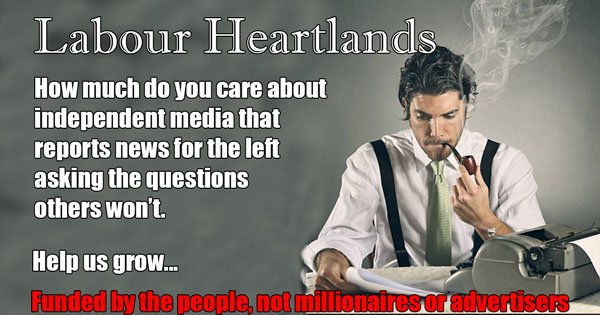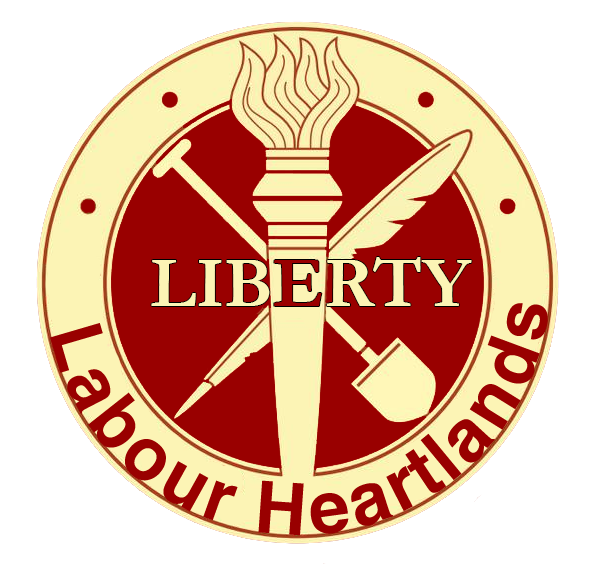We did all the reading, but it’s still as clear as mud.
Under fire for lack of clarity over its lockdown exit plan, the Tory government set out more details in an attempt to clear things up.
The publication of a 50-page document followed Prime Minister Boris Johnson’s televised address to the nation on Sunday evening, which was widely criticised for lacking precision. A broadcast round by Foreign Secretary Dominic Raab on Monday morning ahead of the document’s release added to the confusion when he appeared to contradict the prime minister’s assertion that anyone who is able to work safely should return to their jobs on Wednesday, not Monday as Johnson had stated the night before.
Speaking in the Commons Monday afternoon, Johnson said the public will use “good, solid, British common sense” when it comes to applying the new rules, arguing that approach had worked in the fight against the virus so far. But the package of measures was lambasted by MPs for raising more questions than it answered. “The last 24 hours have spread confusion,” SNP Westminster leader Ian Blackford told him.
• The government announced it would advise the public to wear face-coverings, in places where they cannot distance themselves from others.
• Johnson said lockdown could be swiftly reimposed in a particular local area if a new outbreak is detected – a process he compared to “whack-a-mole”.
• Unions welcomed changes to the safety-at-work guidance for reopening workplaces, saying they were “moving in the right direction”.
• Chris Whitty and Sir Patrick Vallance sidestepped the question of whether they signed off the “stay alert” slogan, saying they weren’t communications experts.
The document, which only covers measures in England, warned it won’t be a “quick return to normality” and that the “only feasible long-term solution lies with a vaccine or drug-based treatment.” It ruled out drastic changes in the near term, such as allowing schools to fully return, because of the risk of a second wave “that could be larger than the first” and successive waves in the future, potentially coinciding with the next winter flu season.
“In a population where most people are lacking immunity, the epidemic would double in size every few days if no control measures were in place,” the document says.
The plan divides the exit into phases. As the country leaves phase one (lockdown), the plan sets out which restrictions will be replaced with “measures that reflect the level of risk at that point in time.” These measures will be announced in successive steps with several weeks in between to allow for monitoring, and subject to “strict conditions to move from each step to the next.” In phase three, the government hopes effective treatments or a vaccine will be rolled out, bringing the effect of the virus to “manageable levels.”
Johnson’s plan acknowledged restrictions could be adjusted at a different pace across the U.K.’s nations and regions, especially when it comes to responding to local outbreaks. Any changes to lockdown rules will be announced at least 48 hours before they come into effect, and the impact will be monitored by a new Joint Biosecurity Centre, which will also be responsible for a new “alert level,” which seeks to explain the risk to the public by setting levels from one to five.
Work if you can
From Wednesday, the emphasis of government advice will change, the document says, to encourage people to go to work if they are unable to do their jobs from home and if the workplace can implement social distancing measures safely. Anyone able to work from home should continue to do so for the foreseeable future. Food production, construction, manufacturing, logistics, distribution and scientific research in laboratories are all cited as examples of sectors where workers may return.
According to the government’s guidance, employers can reduce the risk of infection in the workplace by limiting the number of people that any individual comes into contact with regularly, for instance by changing shift patterns and rotas and by ventilating workplaces.
To facilitate parents’ return to work, the government wants local authorities and schools to urge vulnerable children or the children of critical workers to attend school. It is also amending its guidance to clarify that paid childcare, such as nannies and childminders, can operate subject to some public health guidance.
The government is now advising workers who must take public transport or shoppers in enclosed spaces to cover their face, despite scientific advisers having previously said the evidence for this was weak. Local councils will receive funding to widen pavements, create cycle lanes and close some roads to traffic.
Good hygiene practices (handwashing, social distancing and regular disinfecting of surfaces) will remain, and the number of social contacts people make each day will continue to be limited. Those with symptoms or in a household where someone has symptoms should not leave their house to go to work.
Also from Wednesday, people will be allowed to leave the house for exercise or recreation for an unlimited amount of time. One person will be allowed to meet one other person from a different household in a public space as long as they stay 2 meters apart, but gatherings of more than two people from different households will remain banned. The government has also asked the Scientific Advisory Group for Emergencies to study whether, when and how it can allow people to expand their household group to include one other household, possibly following the New Zealand model of household “bubbles.”
The government fell short of quarantining the over-70s, pregnant women and those with chronic pre-existing conditions, but it does continue to advise these groups to stay at home at all times and minimize contact with others.
In the 60-page “Plan to Rebuild”, the government set out details of what it called the “second phase” of its approach to dealing with the virus. Described as an “indicative roadmap”, it suggests dates when more of the economy may reopen – but stresses they are dependent on data.
Vallance said he and his colleagues had “strongly supported the conditionality” of the government’s approach, and each step would have to be science-based, not “date-based”.
More outdoor activities will be allowed, and more people who cannot work from home will be “actively encouraged” to return to their workplaces.
But at the same time, the government said “smarter controls” would be imposed, in order to help more areas of the economy reopen when possible.
These include the use of face coverings, encouraging the public to wash their clothes regularly, and changes in work-practices including working from home where possible, cutting down on face-to-face contact and improving ventilation.
The measures are expected to become a “new normal” until an effective vaccine or treatment for the virus can be found.
Addressing MPs about the government’s plans, Johnson insisted the UK should continue to confront the crisis as one, despite suggestions from the Welsh and Scottish governments that he has recklessly abandoned the “Stay Home” message too soon.
“Different parts of the UK may need to stay in full lockdown longer, but any divergence should be only short term because, as prime minister of the UK, I am in no doubt that we must defeat this threat and face the challenge of recovery together,” he said.
There was also confusion about when the latest changes would come into effect. Johnson had appeared to suggest on Sunday that they were immediate.
But Raab, who was sent out to explain the government’s approach on Monday as workers in London crowded on to the tube, said they would not start until Wednesday, once employers had received fresh advice on how to work safely.
Nine sets of new “Covid-secure” workplace guidance were published on Monday evening, after days of consultations with unions and business groups.
The TUC had rejected an earlier draft of the advice, saying it was too loosely worded. But its general secretary, Frances O’Grady, said they were “a step in the right direction”.
“All employers must now carry out and publish risk assessments in consultation with unions and their workforces. After the confusion of the last few days working people will only feel confident if government and employers act now to make safer working a reality in every workplace,” she said.
Johnson later insisted that no one should be returning to an unsafe workplace, and there would be “spot inspections” to ensure compliance by employers.
“In saying that people who can’t work from home should now go to work we are absolutely categorical their workplace, your workplace must be safe, must be Covid-secure,” he said. “Employers will not be allowed to get away with forcing people to work in conditions that are not Covid-secure.”
People arriving from abroad will be required to self-isolate for 14 days, either in their own accommodation or in that provided by the state. This rule will come into force “as soon as possible” but not on Wednesday. There will be some exemptions, including arrivals from Ireland, and those critical to guaranteeing supplies, supporting national security and critical infrastructure, and to meeting the U.K.’s international obligations.
In a joint statement with French President Emmanuel Macron on Sunday evening, Johnson said no quarantine measures would apply to travellers coming from France at this stage. However, the document published Monday does not confirm this.
New normal from June
From June 1 at the earliest, the government hopes some children will be able to return to education in smaller class sizes.
The reopening of non-essential shops will take place in phases from this date, provided there is no worsening in the spread of the virus. The government will issue further guidance soon on which businesses will be allowed to reopen in each phase. Hospitality and beauty services such as hairdressers will remain closed. Cultural and sporting events will take place behind closed doors for broadcast, and local public transport services in urban areas will increase.
New normal from July
From July 4 at the earliest, the government hopes to reopen some remaining businesses, including hairdressers and beauty salons, the hospitality sector, public places and leisure facilities including cinemas, subject to guidelines. However, these measures are heavily caveated.
In a nod to public concerns about lack of preparedness, the government anticipates a “rapid re-engineering” of its structures and institutions to protect the entire U.K. “for decades to come.”
“COVID-19 will not be the last major disease that endangers us. The government must prepare and build now for diseases that could threaten us in the future,” it said.
Help Us Sustain Ad-Free Journalism
Sorry, I Need To Put Out the Begging Bowl
Independent Journalism Needs You
Our unwavering dedication is to provide you with unbiased news, diverse perspectives, and insightful opinions. We're on a mission to ensure that those in positions of power are held accountable for their actions, but we can't do it alone. Labour Heartlands is primarily funded by me, Paul Knaggs, and by the generous contributions of readers like you. Your donations keep us going and help us uphold the principles of independent journalism. Join us in our quest for truth, transparency, and accountability – donate today and be a part of our mission!
Like everyone else, we're facing challenges, and we need your help to stay online and continue providing crucial journalism. Every contribution, no matter how small, goes a long way in helping us thrive. By becoming one of our donors, you become a vital part of our mission to uncover the truth and uphold the values of democracy.
While we maintain our independence from political affiliations, we stand united against corruption, injustice, and the erosion of free speech, truth, and democracy. We believe in the power of accurate information in a democracy, and we consider facts non-negotiable.
Your support, no matter the amount, can make a significant impact. Together, we can make a difference and continue our journey toward a more informed and just society.
Thank you for supporting Labour Heartlands











